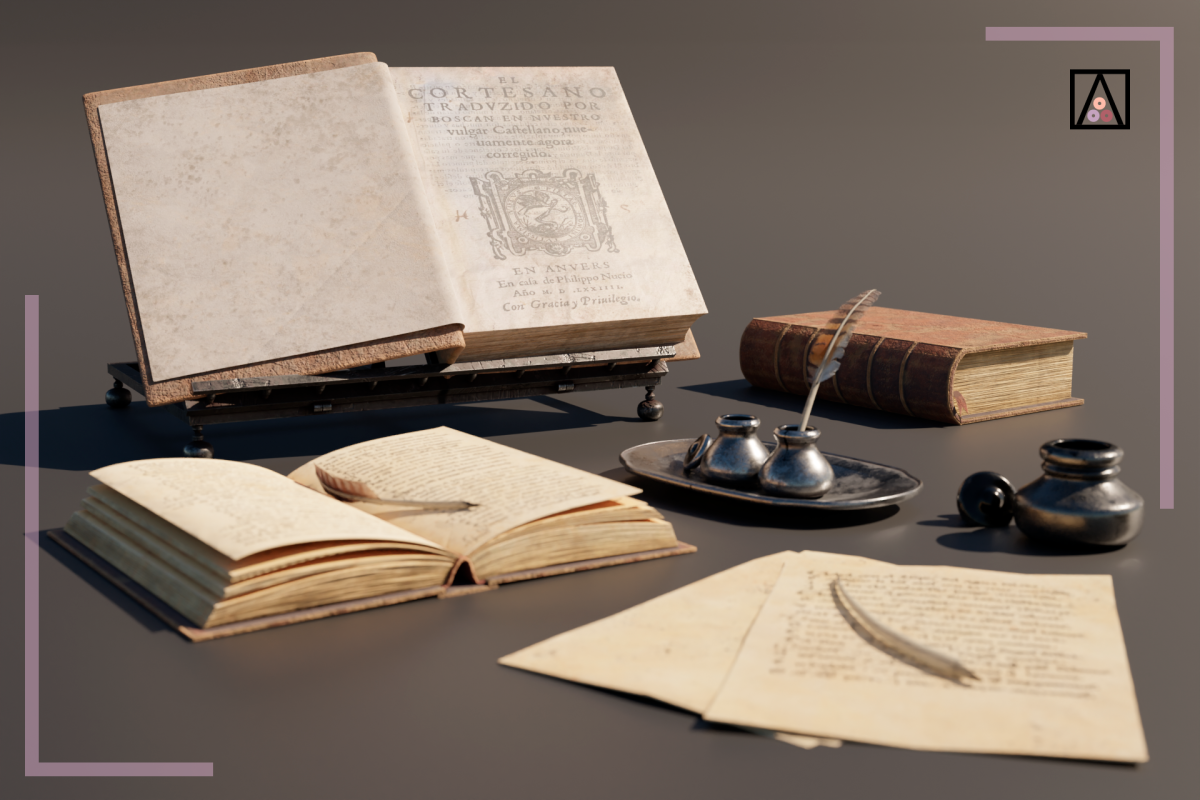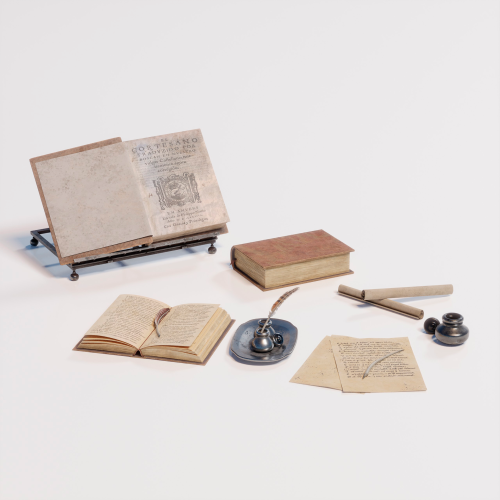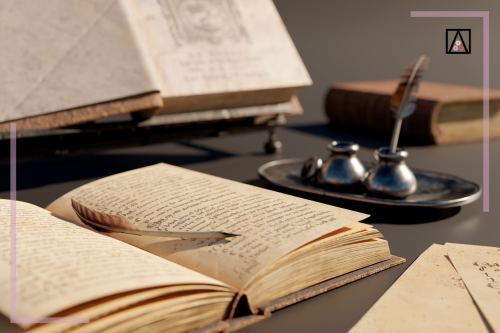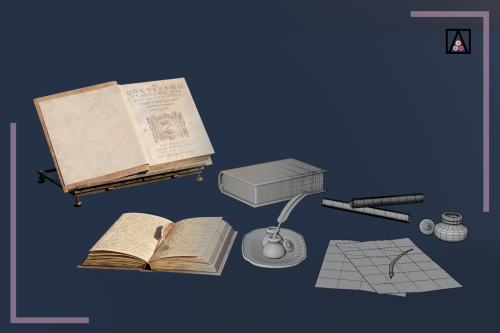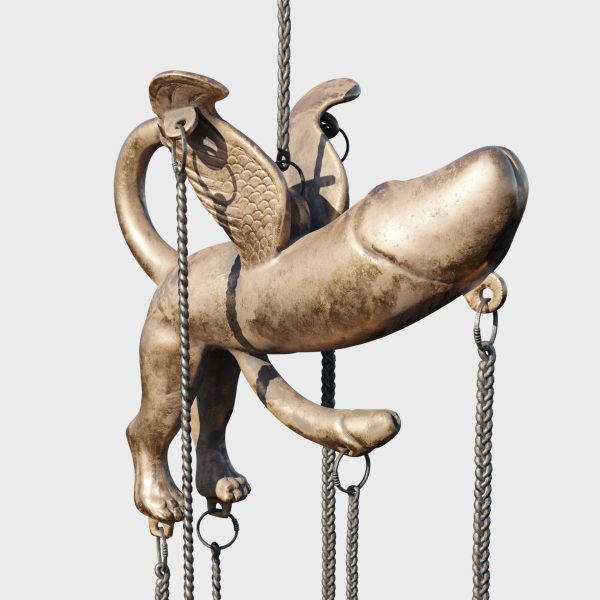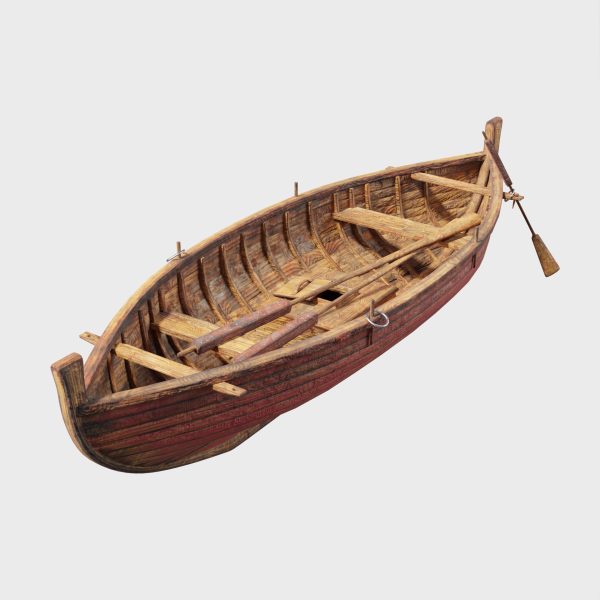We can only study writing through the supports used to house it, as well as the materials used to sgraffito, carve or paint it. Thus, carrying out a history of writing inevitably leads to studying the materials with which it has been developed. In this virtual set of writing objects we can find rolled papers, others already stretched ready for writing, various types of bird feathers with which to write, in addition to their inkwells, two in pairs on a tray and another, larger, loose . We also find notebooks where to make notes and several books, such as the famous El Cortesano (The Courtier), written by the Italian humanist Baldassare Castiglione in 1528 in Venice and translated into Spanish by Juan Boscán in 1534 (Fernández, S., 1997. P. 5).
LOD0: 111K Poly / 223K Tris
LOD1: 41K Poly /73K Tris
LOD2: 16K Poly /17K Tris
LOD3: 4K Poly / 5K Tris
Game Ready Model
Formats: .FBX; .OBJ; .blend.
PBR materials (JPG/PNG)
Texture maps: Base Color, Normal Map, Metallic, Roughness, AO, Height.
Texture resolution: 1K, 2K and 4K.
Rigged: No
Animated: No
Mask for color alternatives: No
María Herrera Pinadero
ÁLVAREZ FUERTES, C. (2017): Soportes e instrumentos de escritura: su evolución histórica. Trabajo de fin de grado. Universidad de Zaragoza.
FERNÁNDEZ, S. (1997): El Cortesano. Baltasar de Castiglione. Presentación y notas de Sergio Fernández. UNAM. México. P.5.
GAUR, A. (1990): Historia de la escritura. Fundación Germán Sánchez Ruipérez. Madrid.
Paintings of Saint John the Evangelist from the 16th century have been used as a reference, especially for books, pens and inkwells, such as those by Pedro Berruguete of the altarpiece of Saint Thomas: https://www.meisterdrucke.es/impresion-art%C3%ADstica/Pedro-Berruguete/81627/San-Juan-Evangelista,-del-retablo-de-Santo-Tom%C3%A1s.html


